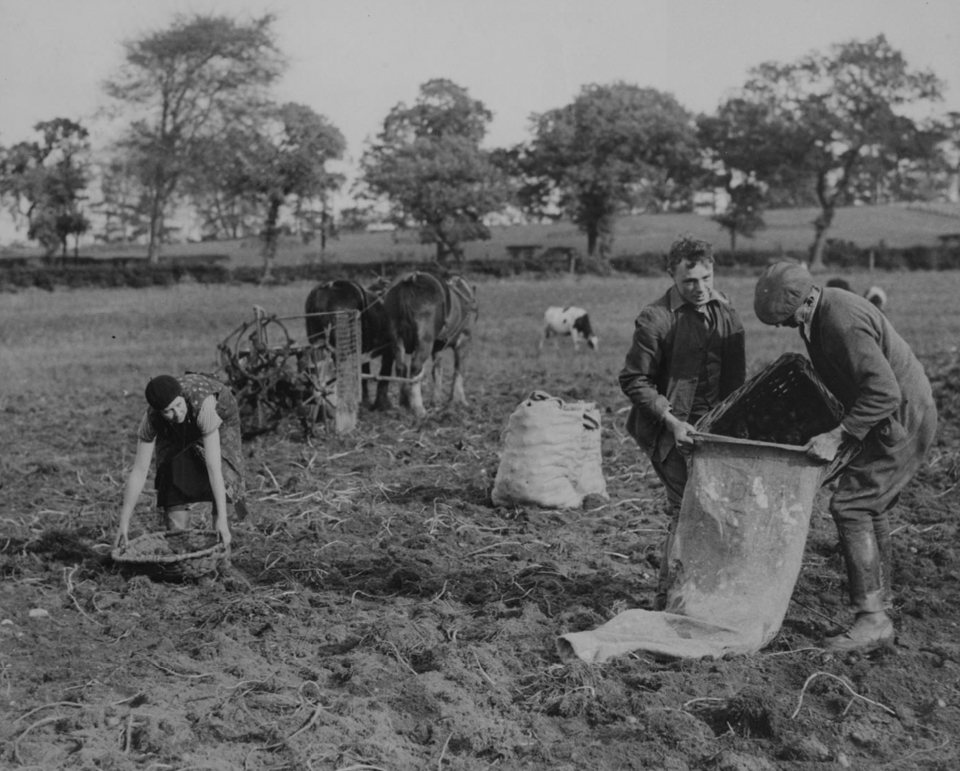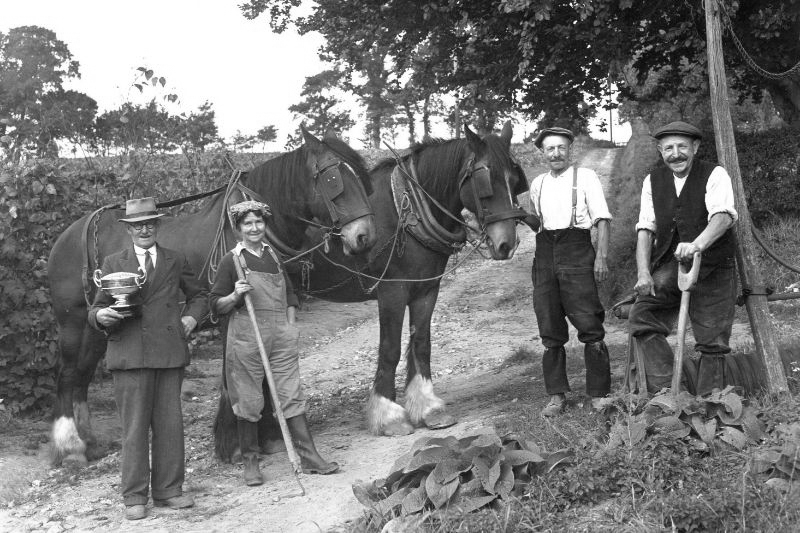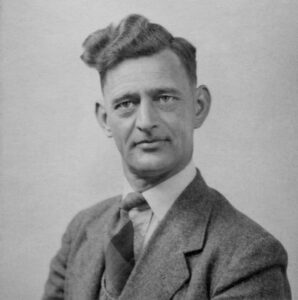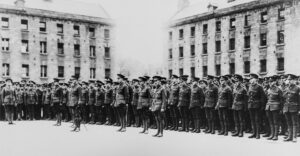The further back you go into any family history, the more likely it is that you will find that ancestors who worked the land. My family is no exception, with many agricultural and even a few who had their own farms as late as the 1940s. This blog aims to provide some context for their lives through the transformative period between the mid-19th and mid-20th centuries.
Agricultural labourers
In the mid-19th century, most land was owned by the local aristocracy. There was little mechanisation with most of the work being undertaken manually by an army of some 1.5 million agricultural labourers – the largest employment sector at the time. About a quarter of these workers were women. Supporting this community were essential trades such as blacksmiths, wheelwrights, and millers.
Many labourers used annual hiring fairs to find new employment, with labourers being unable to resign or be sacked without good cause for the year, and breaking a contract could ruin a man’s reputation. This resulted in many labourers being highly mobile as they chased higher wages, although some stayed on the same farm for many years.
Agricultural labourers faced hard working conditions, low wages, long hours, and were subject to the vagaries of weather. A typical working day began before daybreak. Men were often joined in the fields by their wife and children, especially at harvest time. The work was seasonal and labourers were paid by the day, and so to mitigate any loss of income during quiet times many tried to earn additional money through cottage industries such as lacemaking or straw-plaiting. Many families also worked small adjacent gardens, and kept chickens, and maybe a pig, to enable them to survive.
Living conditions were typically poor, with families crammed into rudimentary two-bedroom cottages provided by landowners. Large families meant parents and younger children shared one bedroom, while older children occupied the other, separated by curtains. Some children were sent to live with relatives or became domestic servants or apprentices. Major landowners often held significant control over rural villages, serving as employers, justices, landlords, churchwardens, and Poor Law administrators.
The jobs to be completed were many and varied by the time of year and type of farm. There were animals and chickens to be fed, cows to be milked, eggs to be collected, goods to be taken to market, horses to be groomed, sheep to be sheared, fields to be ploughed, seeds to be planted, manure to be spread, crops to be harvested, fruit to be picked, wood to be gathered, drainage ditches to be cleared, fences to be mended, hedges to be trimmed, and so on. The physical demands of this work kept rural labourers among the healthiest in the country, benefiting from exercise, fresh air, and a wholesome diet.
The late 19th century saw the gradual introduction of mechanisation. The use of threshers, reapers, and ploughs increased productivity but drastically reduced the need for labour. As competition for limited jobs drove down wages, many chose to migrate to the new industrial towns and cities in search of better opportunities. By the 1880s, agricultural employment had dropped to 17% of the workforce, and by 1901, it was just 12%.

Independent and tenant farmers
A tenant farmer was one who rented land owned by a landlord. The landowner might contribute some capital to ensure that the tenant would be successful, but the annual rent rarely left much over. However, nearly all farmers were left to get on with their lives and farming if they kept the land well looked after and the buildings maintained and in good order. Farmers had an awful lot of freedom and independence, and this was one of the good things of living and working in the countryside.
In comparison, smallholdings were farms that were usually less than 10 acres but independently owned and operated by single families (the average farm in 1851 was 111 acres). They would often specialise, for example, as vegetable producers, piggeries, dairies, and poultry producers for nearby towns and cities. The advantage of smallholdings was the ability to pass them down through generations, ensuring older family members had a place to live in retirement.
The agricultural depression of the late 19th century, caused by cheap grain imports from the US, led to widespread financial hardship. Many independent farmers were forced to become tenant farmers or agricultural labourers. Government land reforms, such as the Small Holdings and Allotments Act of 1908, sought to support small farmers and encourage land ownership.
During the First World War the need for increased food production led to government intervention and support for farmers. The Women’s Land Army helped address labour shortages by recruiting women to work on farms. Post- war, the government introduced new technologies and farming methods to modernise agriculture.
The next war brought even greater emphasis on self-sufficiency and food security with rationing and controlled agricultural production to ensure adequate food supplies. Smallhold farmers were encouraged to maximise output, and many received subsidies and support to enhance productivity. The war also accelerated technological advancements, leading to greater mechanisation and improved farming practices.





